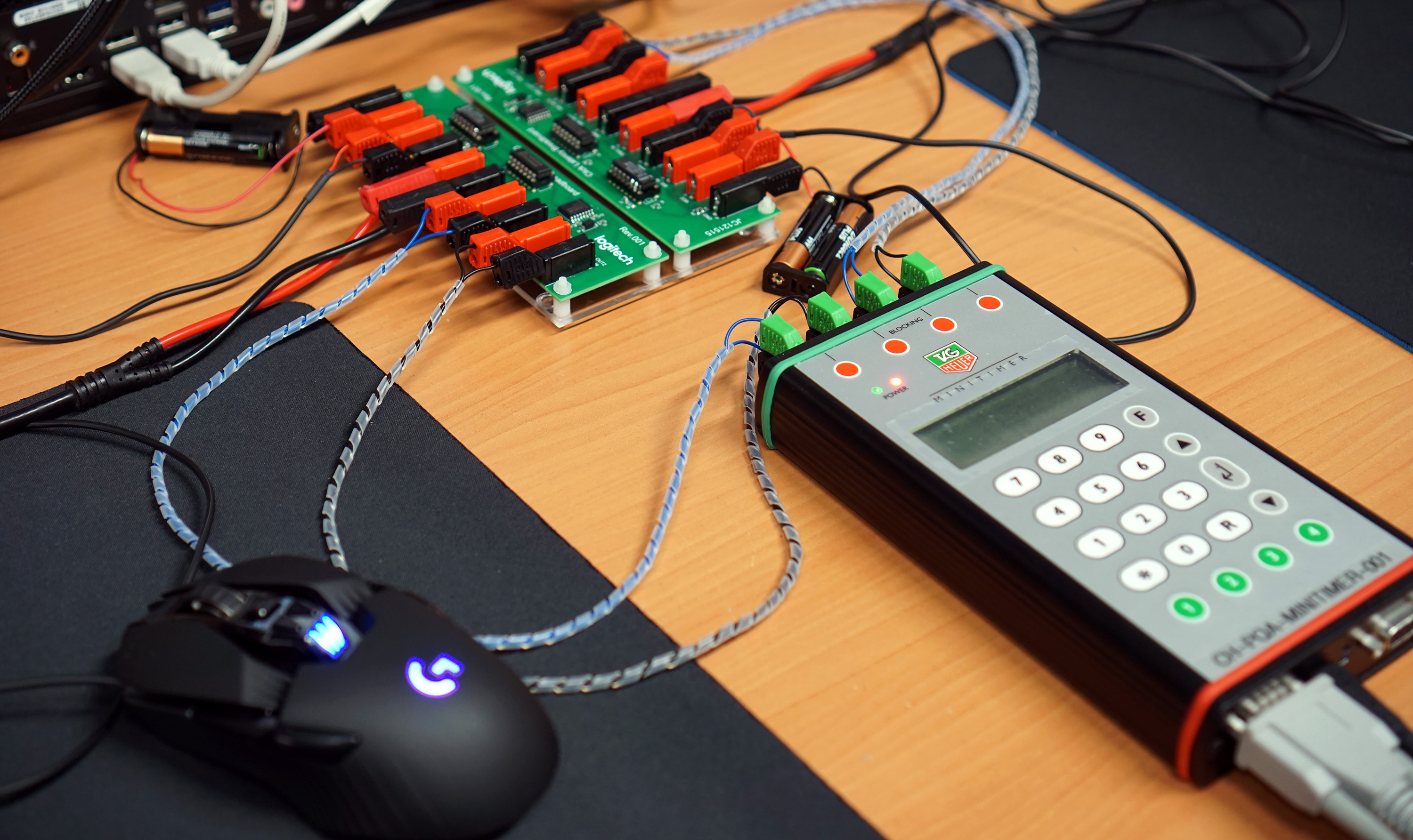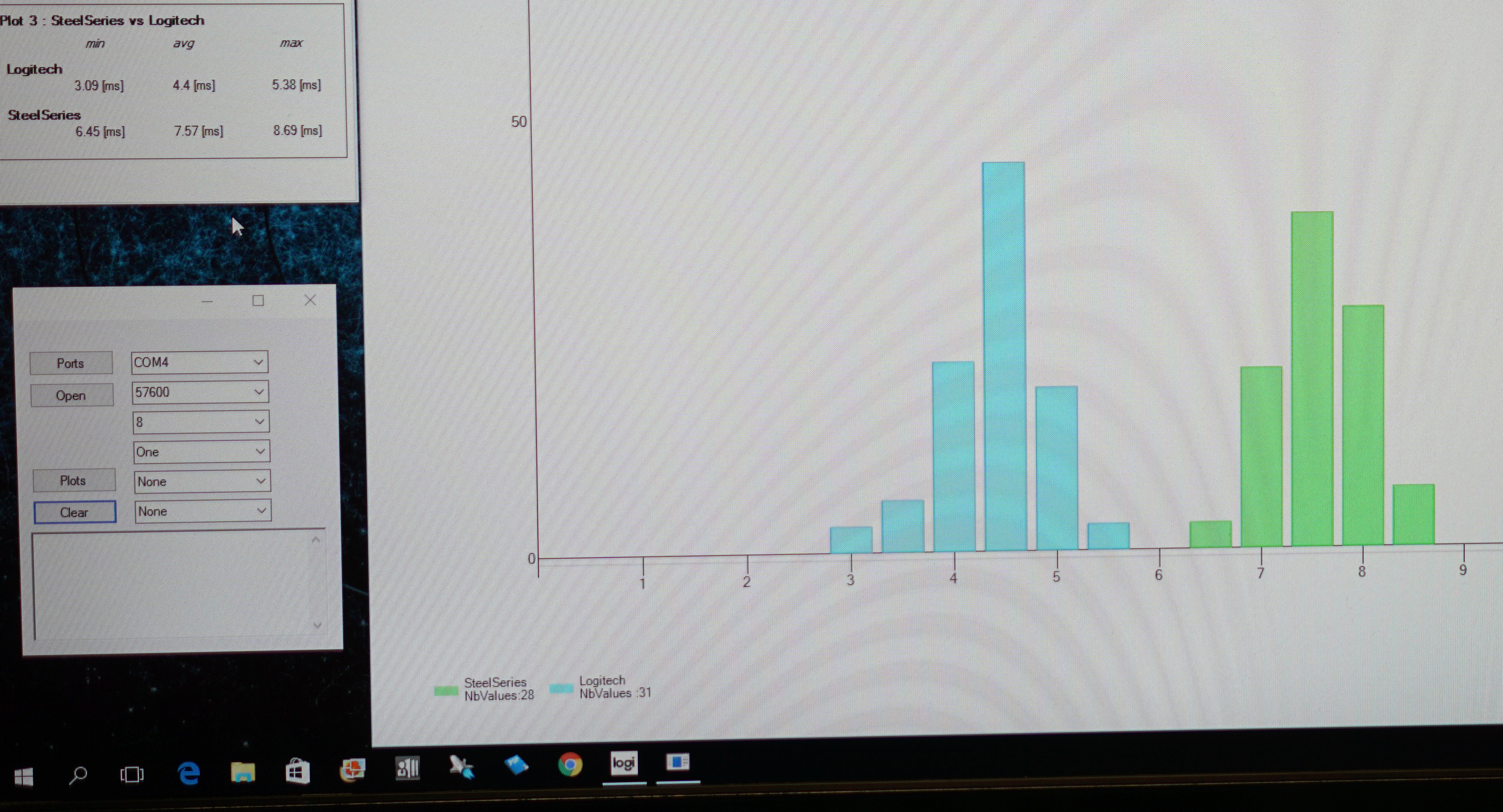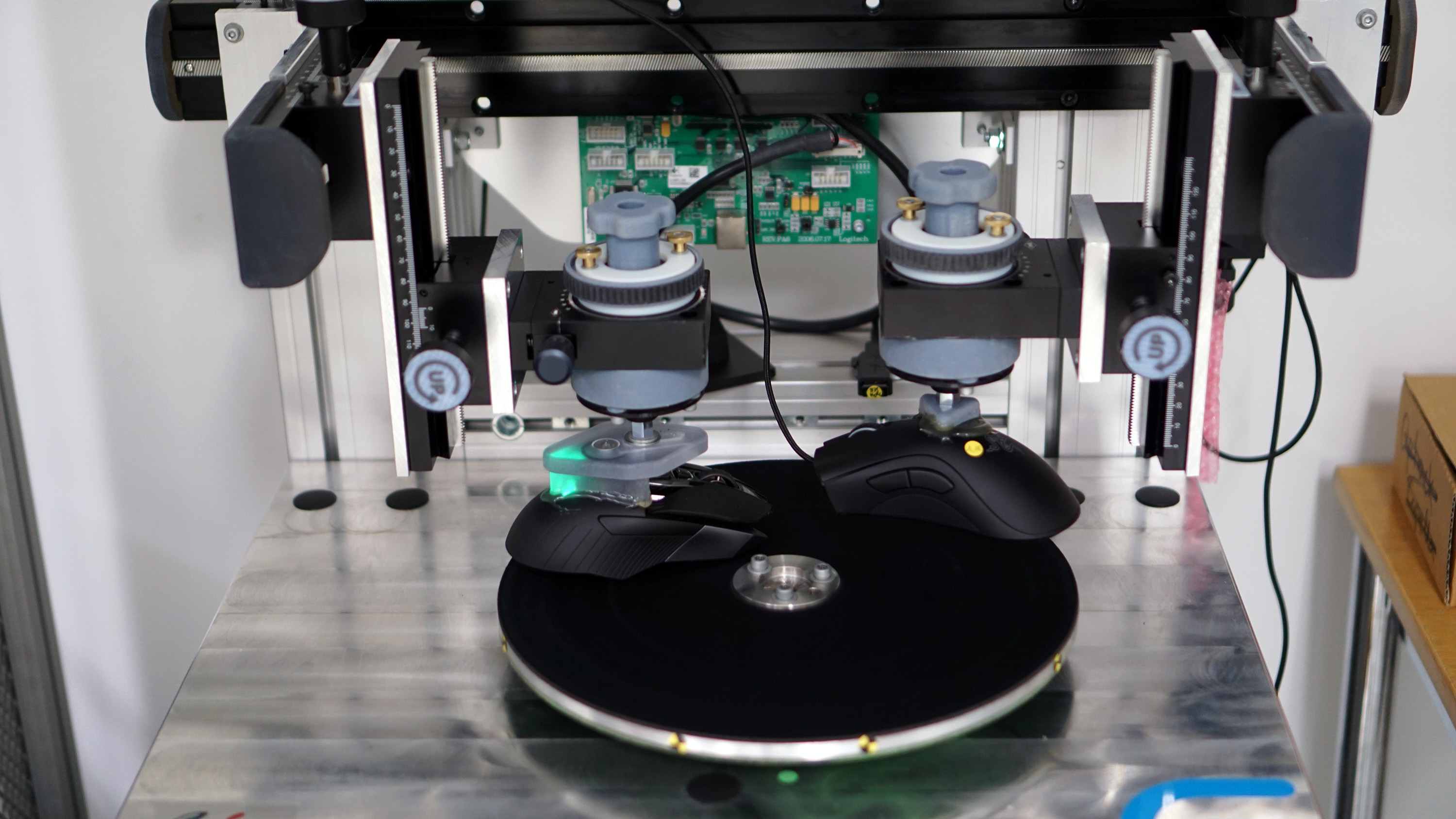How Logitech aims to prove wireless latency is a thing of the past

At the speed of radio (waves)
If the biggest fear with wireless mice is the specter of interference, the second biggest is reaction time. Isn’t the signal going to travel more quickly over a wire than over a wireless antenna? Logitech demonstrated a pair of tests to prove that wasn’t the case.
In one, Logitech ran a signal from the electrical switches underneath the left- and right-click buttons of several mice to a latency measurement device to test how quickly the USB report made it to the attached computer. The results of my clicks were recorded, and they were pretty surprising. The image below is one example.

The click report rate of the G900 was consistently around 4.5 ms, while the Steelseries Rival and Deathadder Chroma averaged about 7.5 ms and 11 ms, respectively.
I can’t say that’s definitive proof, and it’s possible other companies have tests that show their mice in a better light. But all the mice were wired up identically, the test was unchanged between them, and I clicked the mouse buttons myself and watched the results stack up. It was at least a convincing demonstration that wireless can be just as fast, if not faster, than wired at reporting clicks to the PC.

That just leaves the movement of the mouse itself—how much time passes between you physically moving the mouse and it reporting a signal to the PC. Morier ran me through a number of tests of the mouse movement accelerating, holding steady, and then decelerating on a rotating disc. This action was repeated multiple times to pull out an average of how quickly the sensor would begin reporting as the mouse accelerated. Sensor response is a complex issue, but these charts the test output are fairly easy to understand. Each bar represents the amount of time in milliseconds that passed between the mouse accelerating and the computer receiving a report of its movement, averaged from 33 samples.

As you can see, the G900 beat a couple competing mice and was slightly slower than the wired G302, but we’re talking 1 millisecond here. Unless you have a high-refresh 144 Hz TN monitor, your screen almost certainly takes longer to refresh (even today’s best 144 Hz IPS panels take 4 ms).
Again, it’s not exactly definitive proof that the G900 is the best and fastest mouse in existence. It's more important to note how similar the results are. Being wireless clearly doesn’t hold it back.
Keep up to date with the most important stories and the best deals, as picked by the PC Gamer team.
I’ve been using the mouse for a few days, in an office environment and in a house brimming with electronics, and haven’t noticed any wireless issues. Then again, I’ve also tested other wireless mice and rarely encountered wireless performance issues with them, either. But those mice almost always involved some kind of compromise I didn’t want to make—the Razer Mamba has a great shape, for example, but is heavier than I’d like. The Logitech G602 uses an older sensor that’s not quite as responsive for gaming, but delivers stellar battery life and is comfortable enough to mitigate some of its weight issues.
At 107 grams and with 24 hours of battery life (when in constant use), the G900 doesn’t make those compromises, and Logitech makes a strong case that it's ready to move beyond the cord. Once more gamers actually get their hands on the G900, we'll see if they're ready to go along for the ride.

Wes has been covering games and hardware for more than 10 years, first at tech sites like The Wirecutter and Tested before joining the PC Gamer team in 2014. Wes plays a little bit of everything, but he'll always jump at the chance to cover emulation and Japanese games.
When he's not obsessively optimizing and re-optimizing a tangle of conveyor belts in Satisfactory (it's really becoming a problem), he's probably playing a 20-year-old Final Fantasy or some opaque ASCII roguelike. With a focus on writing and editing features, he seeks out personal stories and in-depth histories from the corners of PC gaming and its niche communities. 50% pizza by volume (deep dish, to be specific).

